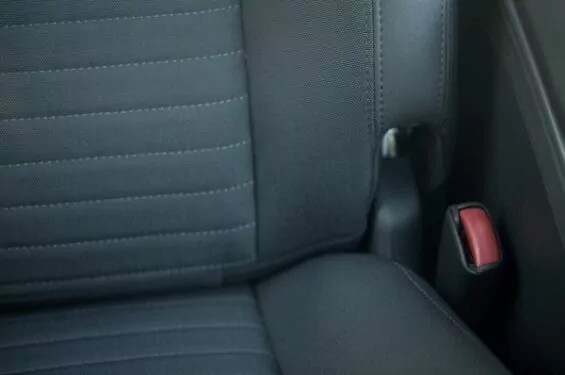 repair car upholstery
repair car upholstery
A pristine car interior speaks volumes about vehicle care, and nothing detracts from this appeal faster than unsightly holes in your car upholstery. Whether it’s a small burn, a tear from wear and tear, or damage from pets, a hole in your car seat can be a real eyesore. Before you consider expensive professional repairs or generic seat covers that hide the problem, you might be surprised to learn that repairing holes in car upholstery is a manageable DIY task. This guide will walk you through simple steps to restore your car’s interior and save money, focusing on effective techniques for fabric and leather upholstery.
Assessing the Damage to Your Car Upholstery
Before diving into any repair work, the first crucial step is to thoroughly assess the damage. Understanding the type and extent of the hole in your car upholstery will determine the best repair approach. For instance, minor tears or small holes, especially in fabric seats, are often straightforward to fix at home. However, larger holes, damage to leather upholstery, or issues affecting safety components like seatbelts require careful consideration.
If you’re dealing with significant rips in leather car seats, or if the damage extends to safety features, it’s generally advisable to consult a professional upholstery repair service. Attempting to fix complex damage yourself might compromise the structural integrity or safety of your vehicle’s interior. Remember, while DIY repairs can improve the appearance, they might not restore the upholstery to a factory-new condition. For highly visible areas or if you’re aiming for a perfect finish, professional repair or reupholstering might be a worthwhile investment, especially if you plan to keep your car for many years.
Step-by-Step Guide to Repairing Small Holes in Fabric Car Upholstery
For fabric car seats, repairing small holes is a relatively simple process that can significantly improve your car’s interior. This method is particularly effective for holes smaller than two inches, such as those caused by cigarette burns or minor abrasions. Here’s how to patch those small holes effectively:
- Gather Your Materials: You’ll need a fabric patch that closely matches your upholstery’s color and texture. Scraps from under the seat or from a hidden area can work, or you can purchase a matching fabric. Additionally, acquire fabric adhesive, also known as upholstery glue, and a piece of interfacing – a fusible fabric used for reinforcement. You’ll also need scissors and an iron.
- Prepare the Hole: Trim any loose threads around the hole to create a clean edge. This will ensure a smoother and more seamless repair.
- Cut the Patch and Interfacing: Cut a piece of interfacing slightly larger than the hole. Then, cut your chosen fabric patch, ensuring it’s large enough to cover the hole with a small overlap onto the surrounding upholstery.
- Apply the Interfacing: Insert the interfacing into the hole, positioning it beneath the damaged area. The interfacing acts as a backing to provide support for the patch.
- Adhere the Fabric Patch: Apply fabric adhesive to the back of your fabric patch. Carefully position the patch over the hole, ensuring it aligns with the surrounding upholstery. Press it gently but firmly into place.
- Heat Seal the Patch: Place a thin cloth over the patched area to protect it from direct heat. Using an iron on a low to medium setting (suitable for the upholstery fabric), gently press over the patch for the time recommended on the adhesive instructions. The heat will activate the adhesive, bonding the patch to the interfacing and the original upholstery.
- Allow to Cool and Set: Let the area cool completely and allow the adhesive to set fully. This might take a few hours, depending on the adhesive used. Avoid using the repaired seat area during this time.
This patch repair method is a cost-effective and efficient way to fix small holes in fabric car upholstery, helping to maintain the overall look and feel of your car’s interior.
Addressing Scratches and Minor Damage in Leather Car Upholstery
Repairing holes in leather car upholstery presents a different challenge compared to fabric. Leather is a more delicate material, and extensive damage often requires professional attention. However, for minor scratches and superficial damage, there are DIY solutions you can try.
For light scratches, a high-quality leather conditioning cream can sometimes work wonders. Apply the cream to a soft cloth and gently buff the scratched area in a circular motion. The conditioning cream can help to moisturize the leather, reducing the visibility of minor scratches and blending them into the surrounding material.
If conditioning cream alone isn’t sufficient, you might consider using a specialized leather repair kit. These kits typically include color-matched fillers and sealants designed for leather upholstery repair. For deeper scratches, you would usually clean the area, apply a leather filler to level the scratch with the surface, let it dry, and then apply a color sealant to blend the repair with the original leather color. Always follow the manufacturer’s instructions provided with the repair kit for the best results.
Remember, when working with leather, it’s crucial to proceed with caution and test any product in an inconspicuous area first to ensure colorfastness and compatibility with your car’s leather upholstery. For significant holes or tears in leather, professional repair is usually recommended to maintain the leather’s integrity and appearance.
Conclusion: Maintaining Your Car’s Interior with DIY Upholstery Repair
Repairing holes in your car upholstery, whether fabric or leather, doesn’t have to be a daunting task. For minor damage, especially in fabric seats, simple DIY techniques like patching can effectively restore the look of your interior and prevent further wear and tear. While leather upholstery requires a more delicate approach, minor scratches can often be addressed with conditioners or specialized repair kits.
By taking a proactive approach to car upholstery repair, you can maintain your vehicle’s interior in excellent condition, enhance your driving experience, and potentially increase your car’s resale value. For significant damage or if you’re unsure about DIY methods, consulting a professional is always a wise decision. However, for those small, annoying holes and tears, a bit of DIY spirit and the right techniques can go a long way in keeping your car’s interior looking its best.

